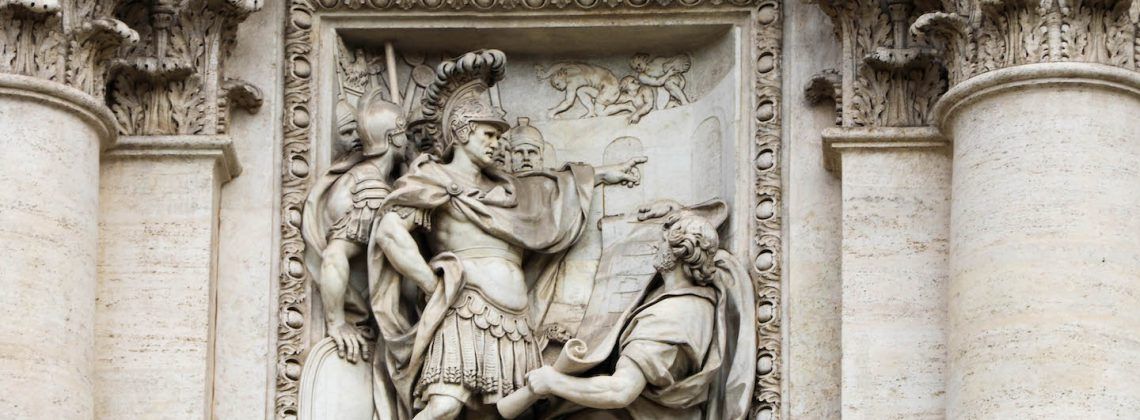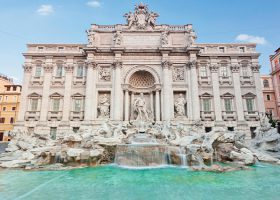Planning a trip to Italy and want to know where the Trevi Fountain is? You probably know it is in Rome but where exactly is it and what has happened over the last 400 years? In this article, we’ll explain where the Trevi Fountain is, how it became to be, and all the drama in between!
Where Is The Trevi Fountain Today?
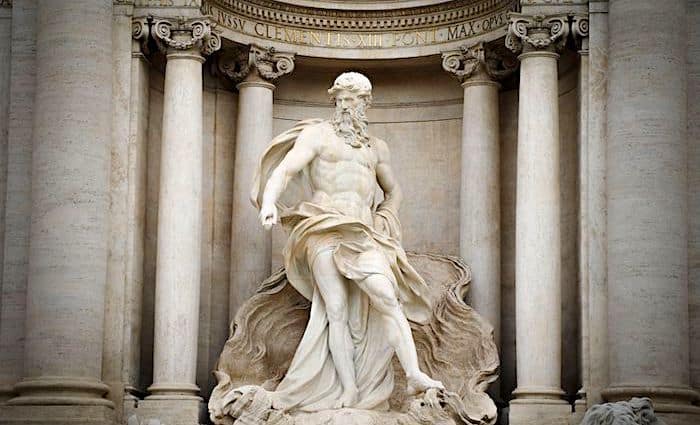
Of course the shortest answer is that it is in the center of Rome.
I have what I call an impact scale from 1-5 which is when you see something for the first time, how it ” hits” you. This fountain definitely ranks up there as a 5 together with the Colosseum and Sistine Chapel.
One of the reasons is that you are walking down some charming winding roads, and then all of sudden, out of nowhere-literally the most beautiful fountain you have ever seen just opens up in front of you.
The water is gushing out and the crowds are there jostling for a great pic, creating this almost surreal atmosphere. I still remember the first time that I saw it over 20 years ago- it’s that memorable.
What is in the Surrounding Area?
As Mentioned above, the Trevi, like many other sites in Rome, are a bit hidden. You can easily reach the fountain from the metro stops at Spanish Steps ( 10 min. walk), and Piazza Barberini ( also 10 min. walk). If you happen to be at the almost 2,000 year old Column of Marcus Aurelius, then it is only a 5 minute walk.
From any of these three points, you can easily reach the fountain. Even after visiting the fountain hundreds of times, when you turn that corner and see it, I still find myself catching my breath at its beauty. If you are a Google Mapper then just click on the link from wherever you are and follow.
Address: Piazza di Trevi, 00187 Roma
Pedestrian Areas
In order to see the Trevi Fountain you will have to come on foot. In the center of Rome they have what is called ZTL which is an Italian abbreviation that means that only local residents are allowed, with a special permit, to drive in this area. You can take a taxi, which can let you off close, but you will still have about a 5 min. walk from any direction.
One of the magical things about the center of Rome, is that there is not rhyme or reason to the way the streets were made. One theory is that after Rome was defeated back in the 4th century BC by the Gauls, they rebuilt the city so fast that it still reflects the haphazard streets you see today.
Now that we got that covered, let’s take a closer look into why the fountain was built and what it means to people today.
What Was There Before the Trevi Fountain
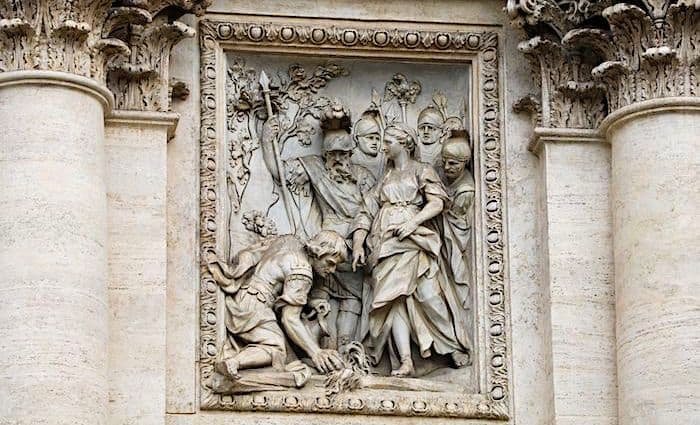
History
As with pretty much everything else in Rome, the Trevi Fountain is associated with some fascinating history. It just so happens that if you were to drink from the Trevi fountain ( not allowed) you would be drinking water from the same source that Ancient Romans did 2,000 years ago!
As the legend goes, General Agrippa, who was the closest friend of Emperor Augustus, was looking for water with his troops. All of a sudden, a virgin appeared and pointed to the ground, whereupon digging, the soldiers found water.
At this point, the aqueduct called Aqua Virgo was created. The aqueduct runs more than 12 miles. The fascinating part is that most of it is underground, bringing the water in using gravity!
The Rebuilding
Fast forward to the middle ages, when all the aqueducts were out of commission in Rome and even the aqua Virgo was just a trickle. Various popes attempted to clear out the tunnels and bring fresh water into the city. They cleared the Aqua Virgo and the endpoint is where you can see the fountain today.
In 1730, Pope Clement XII organized a contest to build a fountain at the terminus point. Remember that in the 18th century, Rome was at its peak of Baroque art. Therefore everything was monumental and grand- think Spanish steps.
A Florentine won the competition, but due to the angry Romans demanding a Roman build it, the Pope relented and gave it to Nicola Salvi. The fountain was finished in 1751 after Salvi’s death.
Why Trevi?
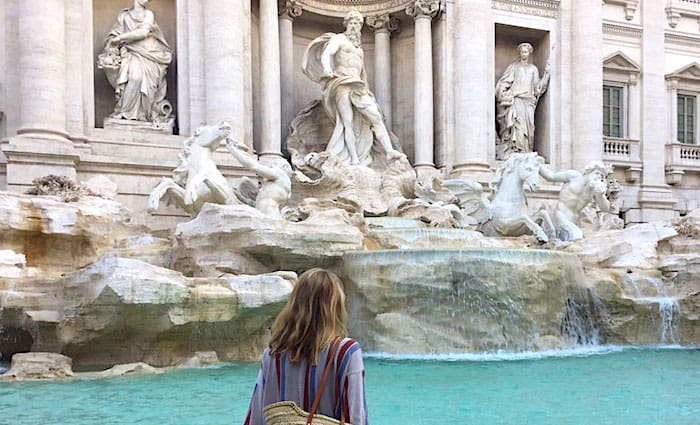
They built the fountain at a corner of three streets. The words tre vie mean three streets so now you know where the name comes from!
The central statue of Oceanus dominates the imposing fountain. ( No, this is not the God Neptune). He is reigning in two horses- one is calm, one is violent which signifies the various moods of the sea.
The stone is Travertine, which is a porous limestone. This is great for buildings and is also the same stone for another famous monument- The Colosseum!
Popular Vatican Tours
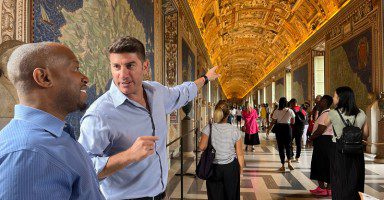
Best Selling Tour
Privileged Entrance Vatican Tour with Sistine Chapel
Without the right access, visiting the Vatican means fighting crowds, long waits, and missing the most significant rooms and works of art. Our privileged entrance tour offers more than just entry—it’s an immersive experience led by a storytelling guide who brings the Vatican to life. Skip the line and explore the Vatican Museums, including the Raphael Rooms, the Sistine Chapel, and St. Peter’s Basilica with engaging insights that make each moment memorable and meaningful.
See Prices

Top Rated Tour
Ultimate St. Peter’s Basilica Dome Climb and Tour with Papal Tombs
Visiting St. Peter’s Basilica and its dome on your own can mean dealing with crowds and waiting in line for hours. Our early-morning tour, led by a captivating local guide, ensures you skip the hassle with privileged access and insider knowledge, including the best times to climb for awe-inspiring views. Explore the stunning Basilica, take in breathtaking panoramas, and descend into the sacred Papal Crypts for a truly immersive experience.
See Prices
Famous Movies & Famous Stories
Famous Movies
By now you understand that the fountain is pretty famous. A further testament to that are the films that involve the fountain.
The main ones you might have heard of are Roman Holidays ( 1953), 3 Coins in the fountain ( 1954), and La Dolce Vita ( 1960). The last one features the famous scene of Anita Ekberg seductively wading through the fountain. These films catapulted the fountain onto the international stage.
The most famous scene in the film La Dolce Vita is when Mastroianni and Anita Ekberg go into the Trevi fountain. It is a compelling scene, but they filmed it in March when it was still pretty cold outside. According to director Federico Fellini, Anita Ekberg said that she could stay in the water for hours without a problem. Marcello on the other hand was so cold, he had to put a wetsuit on underneath his suit and drank a whole bottle of vodka to stay warm! Salute!
Artist Always has Last Word!
One of the funniest facts about the Trevi Fountain is an anecdote. Apparently, when Nicola Salvi was building the fountain, there was a barbershop and a barber within the shop. The barber was not very happy about the construction of the fountain. The barber was short-sighted and didn’t like how the fountain was hurting his business. Therefore so he gave Salvi a lot of trouble. It must have been enough trouble to really piss Salvi off.
Salvi was a Baroque artist and Baroque artists love hidden stories and meaning. Creating beautiful works of art is just the first step for guys like Salvi. Therefore he built a vase resembling the Ace of Cups or Asso di Coppe from the Sicilian card game Scopa. The game has complexities, but winning is defined by a final moment where a player throws the final card down and wins.
When Salvi built the Asso di Coppe he built it so that it blocked the Barbershop. In turn, this blocked from the view of anyone standing in front of the fountain. As you can imagine it drew huge crowds similar to today. Can you imagine when the Barber saw the completed fountain, what he thought? He probably felt like someone had just thrown down the Ace of Cups. This means he cleared all the cards off the table.
The barber had been beaten.

